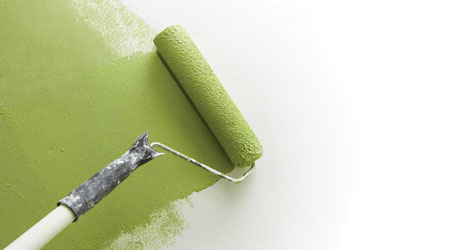Facility managers have a seemingly unlimited number of options when it comes to selecting paint for a particular application, according to an article from Building Operating Management on the FacilitiesNet website. This is good news because it allows facility managers to select a paint most suitable for the application. But it is also bad news: Given so many options, how does a facility manager decide which is the most suitable paint for the project?
It gets even more challenging. Paint that is supposedly suitable for a particular type of application comes in a wide range of prices, some costing two to three times as much per gallon as others. A widely accepted rule of thumb states that as the quality of the paint increases, so does its price, but how can a facility manager be sure? It could be that the higher quality paint really does cost more, but it could also be that a particular manufacturer simply inflated the cost of the paint to make people think it is a higher quality paint when it really isn’t. And is all that high quality really necessary for all applications? Why not just pick a less expensive paint and save money?
Looking only at the material costs of a painting project ignores the total cost of that project. Less expensive paints may be more difficult to apply, require more coats to cover, or provide a shorter service life. Paint is an investment. Instead of looking only at the cost of the paint in the can, facility managers should consider the cost per year of service that it provides, a form of life cycle costing. Understanding what components go into a paint, how they affect quality, and what that means will go a long way to helping facility managers make the best decisions.
A typical can of paint can include as many as 15 or 20 ingredients. Most of these can be lumped into four general categories: pigments, resins, solvents, and additives. The types and concentrations of ingredients used in the production of paint vary by manufacturer. Varying the materials and their quantities has definite benefits and limitations, particularly when it comes to the overall quality of the paint, but it is important to remember that there is no such thing as the perfect paint. Understanding how the ingredients affect quality and cost will help facility managers select the one best for their particular application.

 Hand, Foot and Mouth Disease on the Rise
Hand, Foot and Mouth Disease on the Rise BayCare Reveals Pagidipati Children's Hospital at St. Joseph's
BayCare Reveals Pagidipati Children's Hospital at St. Joseph's Preparing for the Hazards of Winter Weather
Preparing for the Hazards of Winter Weather Why Identity Governance Is Becoming a Facilities Management Issue
Why Identity Governance Is Becoming a Facilities Management Issue Habitat Health Opens South Los Angeles PACE Center
Habitat Health Opens South Los Angeles PACE Center